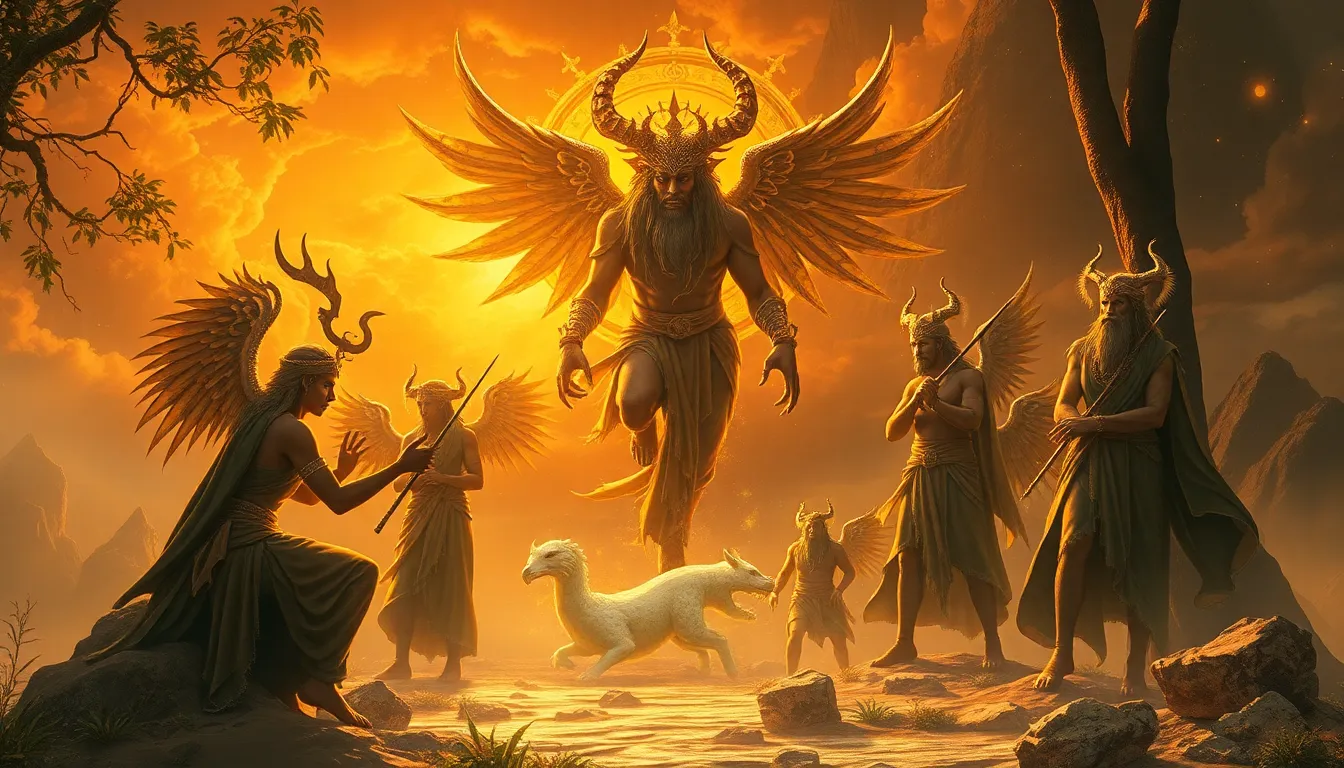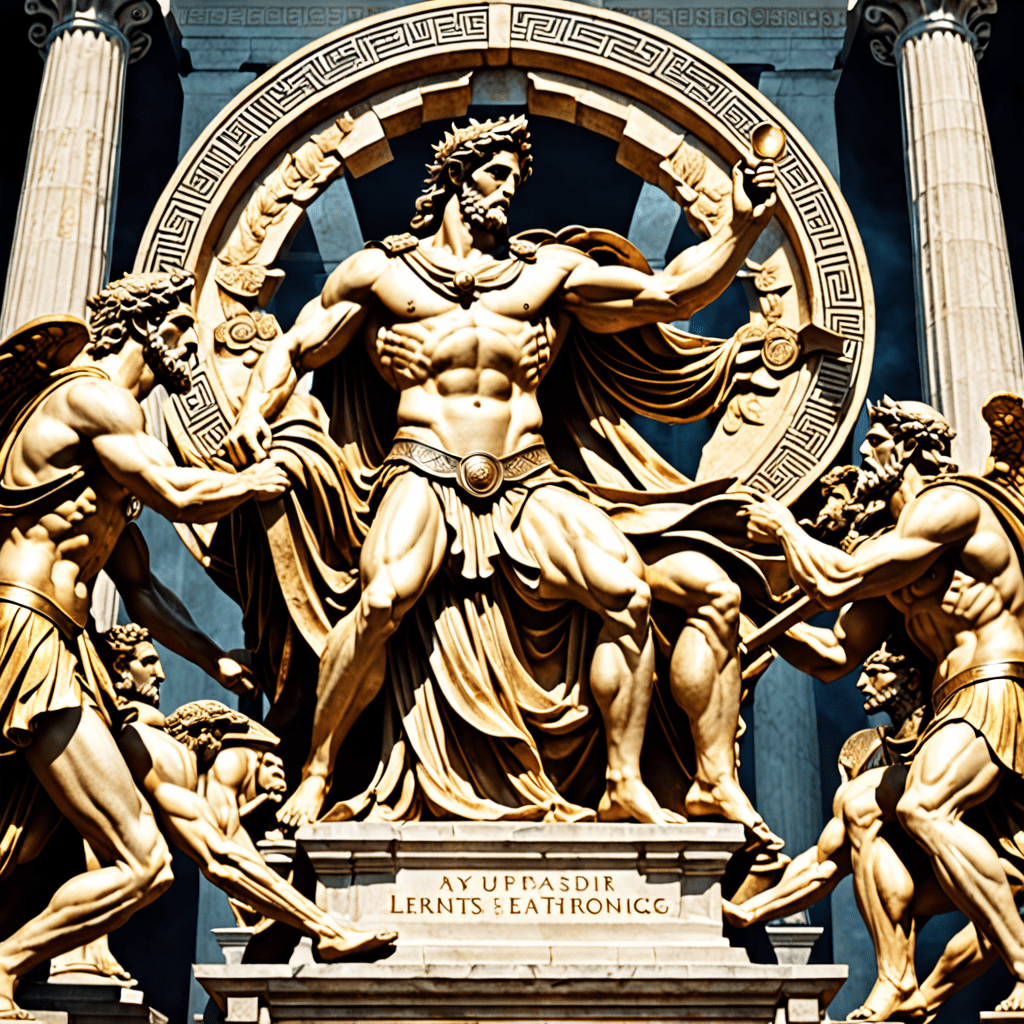The Myths of Ancient Deities and Their Connection to Nature
Introduction: The Significance of Myths in Ancient Cultures
Mythology has played a crucial role in the development of ancient societies, serving as a means to explain the world around them. These narratives often provided a framework for understanding natural phenomena, human behavior, and the mysteries of existence. Through the personification of deities, ancient peoples were able to attribute human-like qualities to elements of nature, forging a deep connection between their beliefs and the environment.
The Concept of Nature in Ancient Mythologies
In ancient cultures, nature was not merely a backdrop for human activities; it was a powerful force filled with spirits, deities, and life. Nature encompassed everything from the vast cosmos to the minutiae of everyday life. Ancient beliefs often emphasized the interconnectedness of humanity and nature, with the environment viewed as a living entity that could be nurtured or offended.
Deities of Creation: The Birth of Nature
Creation myths are central to many cultures, providing stories of how the world and its elements came into being. These narratives often feature deities that embody the forces of creation, reflecting the values and beliefs of the societies that revered them.
- Gaia (Greek Mythology): Gaia, the Earth Mother, personifies the Earth itself. In Greek mythology, she birthed the sky, mountains, and seas, symbolizing the nurturing aspect of nature.
- Pangu (Chinese Mythology): Pangu is a giant who, according to Chinese legends, separated heaven from earth. His body transformed into various elements of nature, illustrating the belief that humans are intrinsically linked to the cosmos.
- Atum (Egyptian Mythology): Atum is the creator god in ancient Egypt, representing the first being to emerge from the primordial chaos. He is often associated with the setting sun and the cyclical nature of life and death.
Nature Deities and Their Domains
Many ancient cultures worshipped deities associated with specific aspects of nature, each governing a distinct domain. These gods and goddesses served as guardians of the natural elements that were vital for survival.
- Poseidon (Greek): The god of the sea, Poseidon controlled the oceans, storms, and earthquakes, embodying the power and unpredictability of the waters.
- Demeter (Greek): As the goddess of agriculture, Demeter was revered for her ability to ensure the fertility of the earth and the success of crops.
- Artemis (Greek): The goddess of the hunt and wildlife, Artemis represented the wild aspects of nature, emphasizing the importance of balance within ecosystems.
The Duality of Nature: Benevolent and Malevolent Aspects
The ancient view of nature was not solely positive; it also encompassed destructive forces that could bring chaos and suffering. Many deities embodied both nurturing and destructive aspects, illustrating the duality of nature.
- Kali (Hinduism): Kali is often depicted as a fierce and terrifying goddess, embodying destruction. However, she also represents transformation and the cycle of life and death.
- Skadi (Norse Mythology): Skadi, the goddess associated with winter and hunting, represents the harshness of nature, yet she is also revered for her connection to the beauty of the snowy landscape.
Seasonal Cycles and Agricultural Myths
Many myths explain seasonal changes and their impact on agriculture, reflecting the vital relationship between humans and the cycles of nature. The story of Demeter and Persephone in Greek mythology is a prime example of this connection.
In this myth, Demeter’s daughter, Persephone, is abducted by Hades to the underworld. Demeter’s grief causes the earth to become barren, symbolizing winter. When Persephone returns in spring, nature flourishes again, highlighting the cyclical nature of life, death, and rebirth.
Animal Guardians and Totems in Ancient Lore
Animals played a significant role in ancient mythologies, often serving as guardians or totems. These animal deities were believed to connect humanity to the natural world, embodying various traits and powers.
- Anubis (Egyptian): The jackal-headed god associated with mummification and the afterlife, Anubis represents the protection of the dead and the cycles of life.
- Cernunnos (Celtic): Often depicted with antlers, Cernunnos is the god of fertility and the wilderness, symbolizing the interconnectedness of life and nature.
- Totem Animals: Many indigenous cultures have totem animals that represent specific traits and serve as spiritual guides, reinforcing the belief in the sacredness of nature.
Rituals and Worship: Connecting with Nature through Deity Veneration
Rituals dedicated to nature deities were integral to ancient societies, serving as a means to honor and connect with the forces of nature. These rituals often included:
- Festivals celebrating seasonal changes and harvests.
- Sacrifices and offerings to appease deities and ensure their favor.
- Rituals to invoke blessings for fertility, health, and prosperity.
Through these practices, ancient peoples sought to maintain harmony with the natural world and acknowledge their dependence on it.
Modern Interpretations and Revivals of Ancient Nature Myths
In contemporary society, there has been a resurgence of interest in ancient nature myths, often seen through the lens of modern environmental movements. Many people are drawing connections between these ancient narratives and contemporary issues, leading to new interpretations and practices.
- Neo-Paganism: Modern pagan movements often incorporate ancient deities and nature worship into their practices, emphasizing the sacredness of the earth.
- Eco-Spirituality: This movement seeks to integrate ecological consciousness with spiritual practices, recognizing the divine in nature.
- Mythological Storytelling: Many artists and writers are reviving ancient myths, using them to address current environmental challenges and inspire action.
Conclusion: The Enduring Legacy of Nature Myths in Contemporary Society
The myths of ancient deities and their profound connection to nature continue to resonate in today’s world. As we face modern environmental challenges, these stories remind us of the importance of respecting and nurturing our planet. By appreciating and learning from these ancient narratives, we can find inspiration to foster a sustainable future, bridging the gap between humanity and the natural world.
https://www.youtube.com/watch?v=7i-z_G2JsOQ



